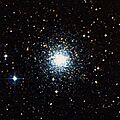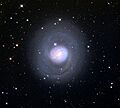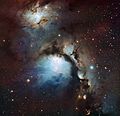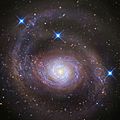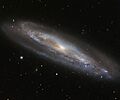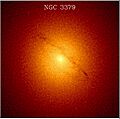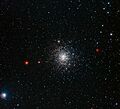Pierre Méchain facts for kids
Quick facts for kids
Pierre Méchain
|
|
|---|---|
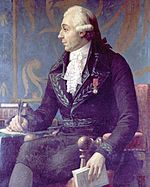
Pierre Méchain
|
|
| Born | 16 August 1744 Laon, France
|
| Died | 20 September 1804 (aged 60) Castellón de la Plana, Spain
|
| Nationality | French |
| Known for | Deep-sky objects comets metre |
| Scientific career | |
| Fields | astronomy |
| Institutions | Paris Observatory |
Pierre François André Méchain (born August 16, 1744 – died September 20, 1804) was a French astronomer and surveyor. He worked closely with Charles Messier. Together, they greatly helped us understand deep-sky objects and comets in the early days of astronomy.
Contents
Life of Pierre Méchain
Pierre Méchain was born in Laon, France. His father was a ceiling designer. From a young age, Pierre showed a great talent for mathematics and physics. However, he had to stop his studies because his family didn't have enough money.
Luckily, his skills in astronomy were noticed by a famous astronomer named Jérôme Lalande. Lalande became his friend and helped him. He even hired Pierre to check the second edition of his astronomy book.
Lalande then helped Pierre get a job at the Naval Depot of Maps and Charts in Versailles. Here, Pierre worked on creating maps of coastlines and studying water. This is called hydrography. Around 1774, he met Charles Messier, and they became friends. In the same year, Pierre wrote his first astronomy paper. It was about when the Moon passed in front of the star Aldebaran.
In 1777, Pierre married Barbe-Thérèse Marjou. They had two sons, Jérôme and Augustin, and one daughter. In 1782, he became a member of the French Académie des sciences, which is a very important science group. From 1785 to 1792, he was the editor of Connaissance des Temps. This was a journal that first published the famous list of Messier objects. In 1789, he was also chosen to be a member of the Royal Society in England.
Measuring the Earth
Pierre Méchain used his surveying skills for a very important project. He helped measure the exact distance between the Paris Observatory in France and the Royal Greenwich Observatory in England. This was done using trigonometry, a type of math that uses triangles to find distances. This project started in 1784. In 1787, Méchain traveled to England with other scientists for this work. They even visited the famous astronomer William Herschel.
After this, he worked on maps of Northern Italy and Germany. But his most important mapping work was geodetic. This means measuring the Earth's shape and size. Starting in 1791, he worked on finding the length of a part of the meridian arc. This is a line on the Earth's surface that goes from Dunkirk in France all the way to Barcelona in Spain.
This measurement was super important because it became the basis for the metric system's unit of length, the metre. The idea was that the distance from the North Pole to the Equator would be exactly ten million meters.
Pierre faced many challenges during this project. The French Revolution was happening, which made things difficult. He was even arrested because people thought his tools were weapons. He was also held in Barcelona when France and Spain went to war. His belongings in Paris were taken during a time called "The Terror." Eventually, he was released and returned home in 1795.
Scientists later found a tiny difference in the length of the meridian. The distance from the pole to the equator was found to be 10,002,290 meters, not exactly ten million. This small difference of about 2,290 meters is sometimes called "Méchain's error." However, it was a very tiny error for such a huge measurement made with 18th-century tools. This small difference did not affect the final length of the meter.
From 1799, Pierre Méchain became the director of the Paris Observatory. He still had some doubts about his measurements of the Dunkirk-Barcelona arc. So, he decided to go back to Spain in 1804 to re-check his work. Sadly, while there, he caught yellow fever and passed away in Castellón de la Plana.
Discoveries in Space
Pierre Méchain discovered many amazing things in space. He found either 25 or 26 deep-sky objects. These are objects like galaxies, star clusters, and nebulas that are far away from Earth. One of his discoveries, M102, is still debated today. He later thought it was a mistake, but some believe he did see something new.
Méchain also independently found four other objects that were already known but he didn't know about them at the time. These include M71, M80, M81, and M82.
Six more of his discoveries were later added to the famous Messier list. These are called "honorary Messier objects." They include:
- M104, the Sombrero Galaxy
- M105, an elliptical galaxy
- M106, a spiral galaxy
- M107, a globular cluster
- M108, a barred spiral galaxy
- M109, another barred spiral galaxy
He also discovered NGC 5195, which is a small galaxy next to the famous Whirlpool Galaxy (M51). This companion galaxy makes the Whirlpool Galaxy look very special.
Pierre Méchain wasn't actually looking for deep-sky objects on purpose. Like his friend Messier, he was mainly interested in finding and listing objects that could be mistaken for comets. Comets are icy space objects that orbit the Sun and often have a tail. By listing other objects, astronomers could tell them apart from new comets. Because of this, he became the second-best comet discoverer of his time, right after Messier.
In total, he discovered eight comets on his own. He also helped discover three others.
His own comet discoveries include:
- C/1781 M1 (Méchain)
- C/1781 T1 (Méchain)
- C/1785 E1 (Méchain)
- 2P/Encke, which he found in 1786
- C/1787 G1 (Méchain)
- 8P/Tuttle, which he found in 1790
- C/1799 P1 (Méchain)
- C/1799 Y1 (Méchain)
Comets he helped discover are:
- C/1785 A1 (Messier-Méchain)
- C/1792 II Gregory-Méchain
- C/1801 Pons (Pons-Messier-Méchain-Bouvard)
Legacy
To honor his work, an Asteroid was named after him on June 24, 2002. It is called 21785 Méchain. This asteroid was found by Miloš Tichý in 1999.
Images for kids
-
Messier 63, the Sunflower Galaxy, one of Méchain's discoveries.
-
Messier 72, a globular cluster discovered by Méchain.
-
Messier 77, a spiral galaxy discovered by Méchain.
-
Messier 78, a diffuse nebula discovered by Méchain.
-
Messier 94, a spiral galaxy discovered by Méchain.
-
Messier 95, a barred spiral galaxy discovered by Méchain.
-
Messier 98, a spiral galaxy discovered by Méchain.
-
Messier 100, a spiral galaxy discovered by Méchain.
-
Messier 101, the Pinwheel Galaxy, a spiral galaxy discovered by Méchain.
-
Messier 105, an elliptical galaxy discovered by Méchain.
-
Messier 107, a globular cluster discovered by Méchain.
See also
 In Spanish: Pierre Méchain para niños
In Spanish: Pierre Méchain para niños
- History of the metre
- Messier object
- List of Messier objects
- Messier marathon
- Seconds pendulum
- Meridian arc of Delambre and Méchain



